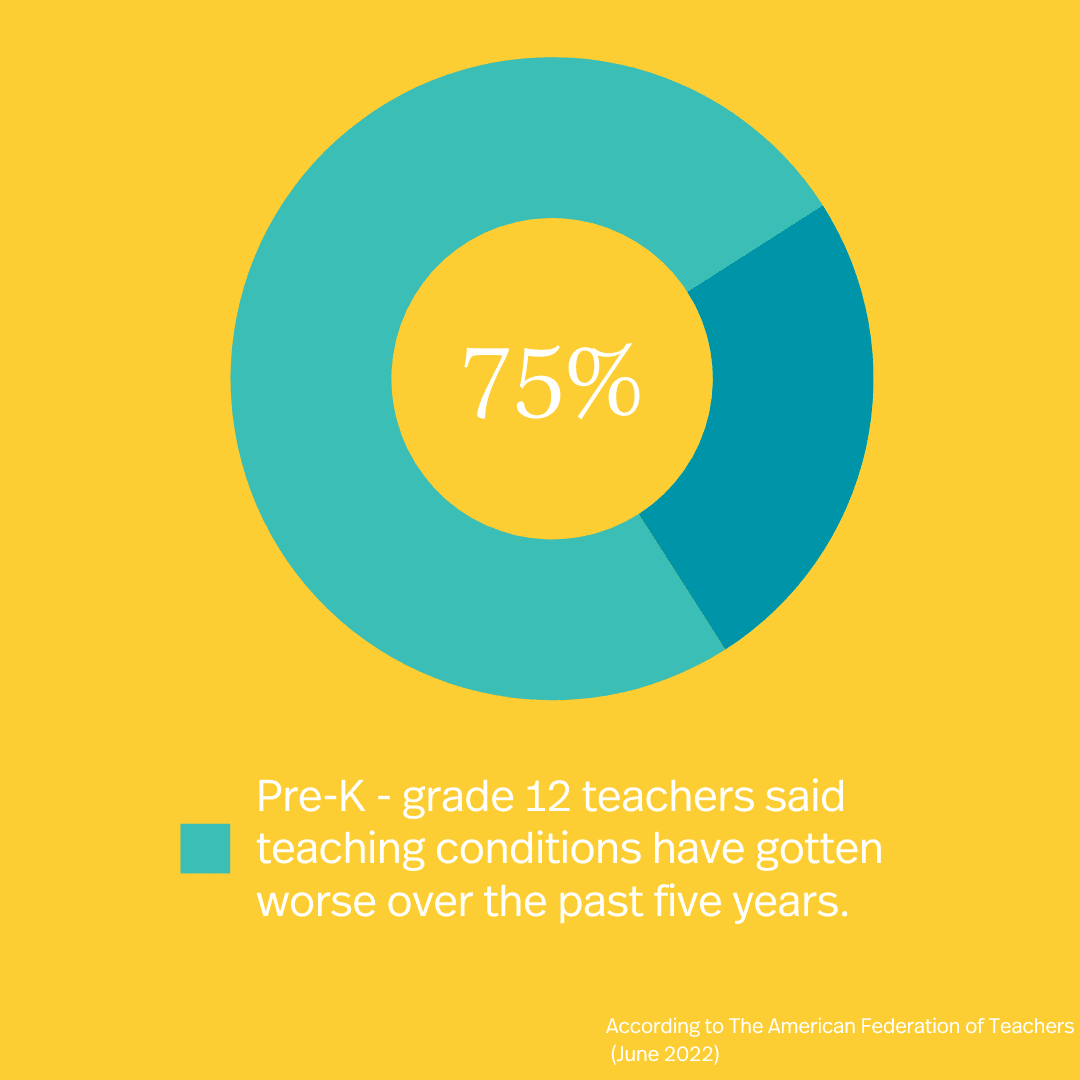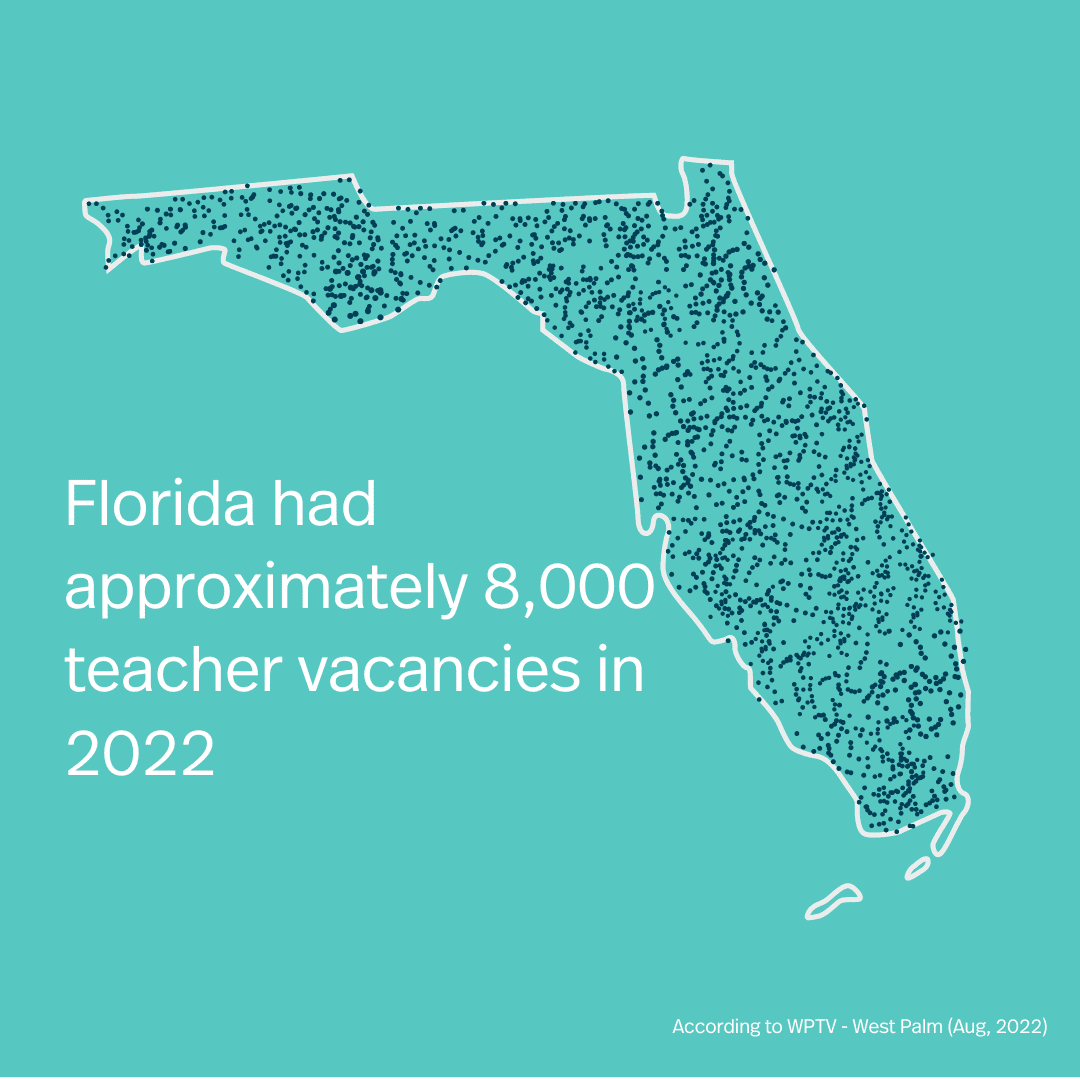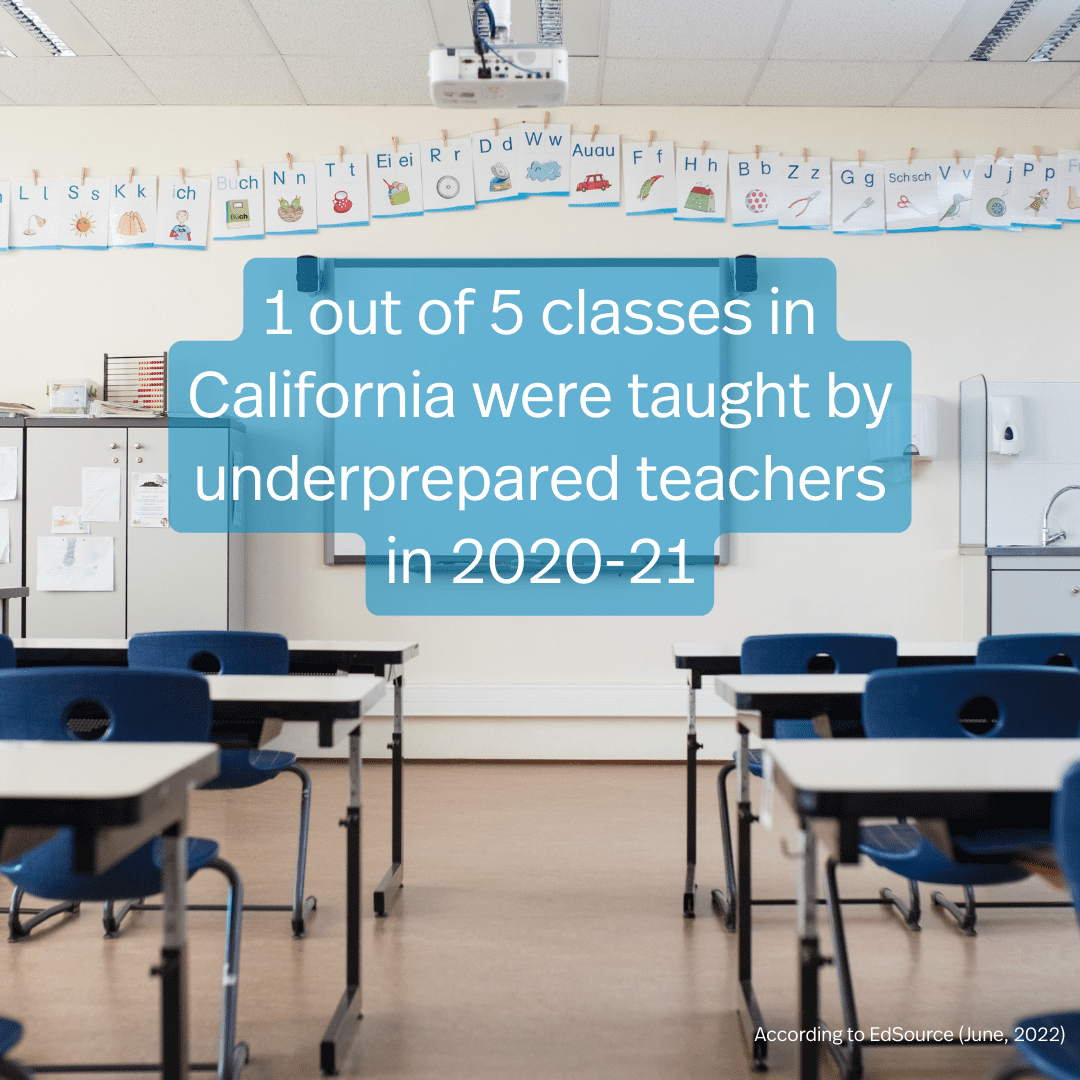It’s happening across the country at an alarming rate: teachers are leaving the profession. According to a survey by the American Federation of Teachers, 75 percent of pre-K to grade 12 teachers said teaching conditions have gotten worse over the past five years. A similar percentage of teachers said they wouldn’t recommend the teaching profession to a prospective new teacher. Other large surveys by the National Education Association and RAND had similar findings. On LinkedIn, a large community of users who are “open to work” celebrate with the hashtag #transitioningteacher when they are hired outside the classroom.

Teacher shortages have happened before, but this one feels different for many states and districts.
How does the teacher shortage look across the country?
While there were 3.5 million teachers in 2018 in traditional public and charter schools, there is no comprehensive national data about teacher turnover during or post-pandemic. To understand what’s happening at a national level, we can examine statistics from smaller surveys.
Here are a few statistics from around the country, collected by Fabiola Cineas at Vox:
- In Texas, teachers are leaving at high rates. Houston had over 800 teaching job vacancies as of August 2022.
- Maryland reported more than 5,500 teachers leaving the profession in 2022, causing Baltimore to have an estimated 600 to 700 vacancies that fall.
- Department of Education officials in Pennsylvania are calling their state’s shortage a “crisis,” and experts there say the state will need hundreds— if not thousands—of new teachers by 2025.
- Florida had approximately 8,000 teacher vacancies in 2022.

- Kansas is having its worst-ever teaching shortage with about 1,400 teaching job vacancies.
- Nevada had over 3,000 teaching jobs unfilled by August 2022.
- 1 out of 5 classes in California were taught by underprepared teachers in 2020-21.

- The number of open positions in Illinois schools jumped by 28% in 2022.
- A 2022 Arizona survey revealed more than 2,000 teacher vacancies across the state.
- Earth Science and Chemistry are a critical shortage area in Missouri.
- The pandemic changed the teaching landscape. RAND reported that nearly one in four teachers said that they were likely to leave their jobs by the end of the 2020–2021 school year. Black or African American teachers were particularly likely to plan to leave.
Dr. Richard Ingersoll, professor of education and expert on the country’s teachers, said in a conversation with Vox that “high-poverty, high-minority, urban, and rural public schools” have had among the highest rates of turnover. The implications of these trends are particularly alarming as they affect student outcomes; teachers are, of course, the heartbeat of nourishing learning environments, making a huge difference for kids.
This data is making school leaders urgently ask: what are the biggest reasons behind teachers walking out, and what can be done to support them so they stay?
To find the answers, you can turn to the experts. On January 24, 10am PT / 12pm CT / 1pm ET, you can join a webinar called Teacher Retention for 2023 & Beyond: How to Build a Lasting Relationship. You’ll hear from Dr. Charlotte Pullins, co-founder of a non-profit that educates underserved children, who has spent over a decade in education. She also is the founder and lead consultant of ELC Training and Consulting LLC and is a certified DEI specialist. Joining Dr. Pullins will be Dr. Tuan D. Nguyen, assistant professor in Curriculum and Instruction at Kansas State University. He studies teacher attrition and retention and the effects of education policies intended for social equity and school improvement.
Together they will answer questions about what can charter leaders do to create lasting relationships with their educators.
You can sign up here for this free resource, or watch on demand.
